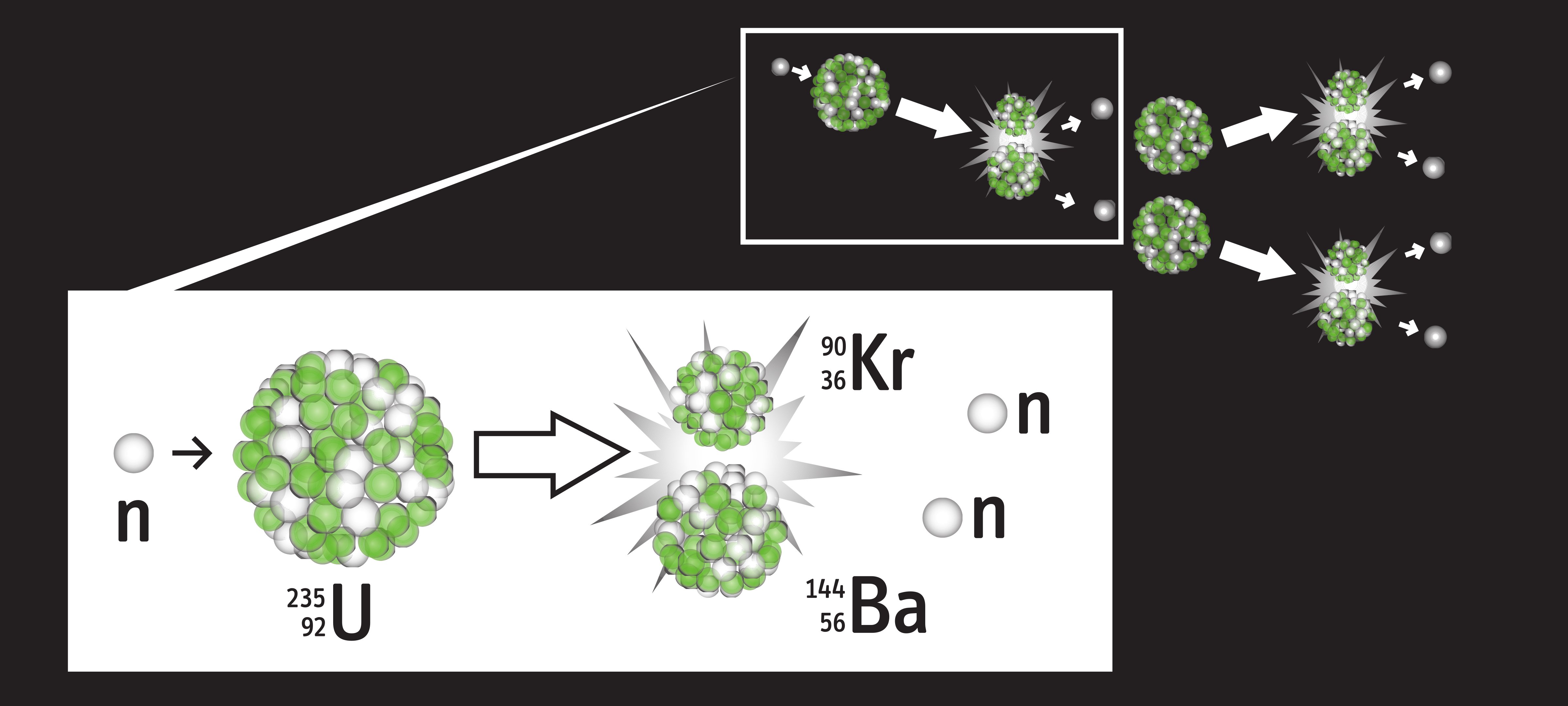An explosive fission chain-reaction releases enormous amounts of energy in one-millionth of a second.
In this example, a neutron is
absorbed by the nucleus of uranium-235 (U-235),
which splits into two fission products (barium and
krypton). The energy set free is carried mainly
by the fission products, which separate at high
velocities. Additional neutrons are released in the
process, which can set off a chain reaction in a
critical mass of fissile materials. The chain reaction
proceeds extremely fast; there can be 80 doublings
of the neutron population in a millionth of a second,
fissioning one kilogram of material and releasing an
energy equivalent to 18,000 tons of high explosive
(TNT).
From IPFM, Global Fissile Material Report 2011

Click in picture to continue.
View image

